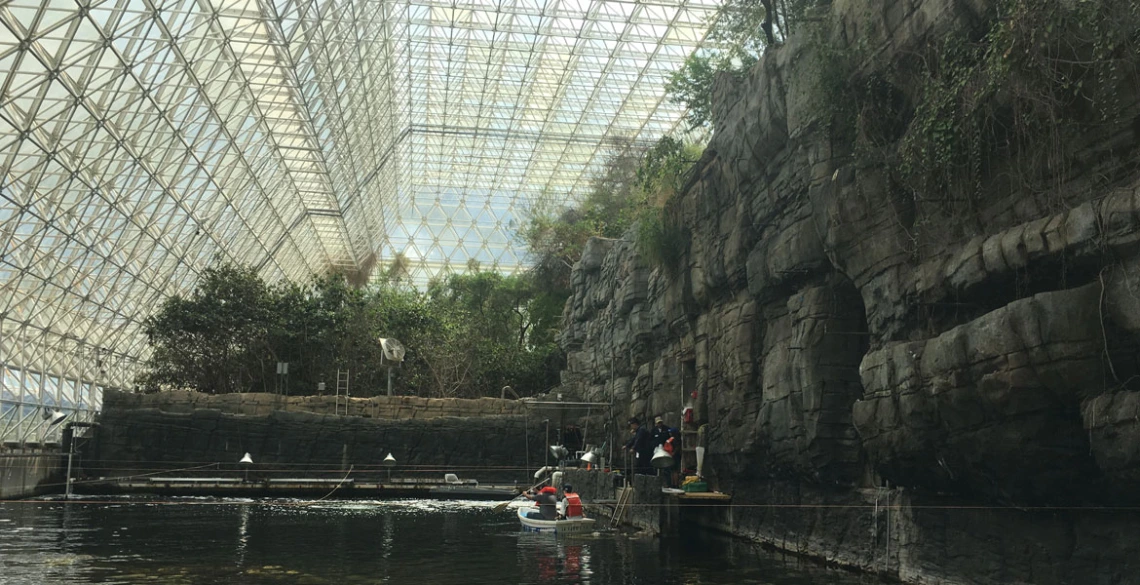Today’s Students Are Tomorrow’s Space Explorers
Ten students from Japan and Arizona gathered for the first official Space Camp at Biosphere 2, where they designed Biosphere 3 to sustain life on Mars.

Students from Kyoto University in Japan and across Arizona participated in hands-on research in Biosphere 2's ocean biome. (Photo: Gregor Orbino)
From the depths of the ocean’s trenches to the most tenuous heights of the atmosphere and everything in between, Biosphere 1 encompasses all life on Earth. The University of Arizona’s Biosphere 2 is the world’s largest earth science laboratory, housing seven model ecosystems dedicated to the research of global scientific issues. Today’s students, and the next generation of interplanetary explorers, have imagined what Biosphere 3 will become on the surface of the red planet.
Ten undergraduate students -- five from Kyoto University in Japan and five from colleges across Arizona, including UA materials science and engineering sophomore Daniel McConville -- gathered for the first official Space Camp at Biosphere 2, held Aug. 5-10. The summer camp was jointly organized and run by researchers from Kyoto and the UA.
At Biosphere 2, the students participated in hands-on research in the facility’s diverse ecosystems including the rainforest, ocean and desert biomes. They also attended lectures by faculty from both universities and three NASA and JAXA astronauts -- Richard Linnehan, Kimiya Yui and Takao Doi -- about their training and experiences in space.
The activities generated discussion about how to translate lessons learned from the Biosphere 2 closed system for human life support on Mars.
“We worked together to plan Biosphere 3,” McConville said.
McConville plans to someday become an astronaut and use the education and experiences he gained at the UA and Space Camp to pursue a career in space development. He hopes to be part of teams that construct bases on the moon and Mars.

